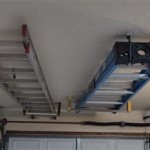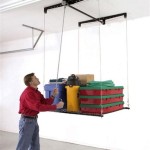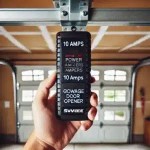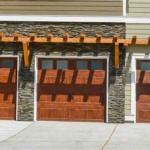Residential Garage Door Repair in San Francisco: A Comprehensive Guide
San Francisco, with its unique architectural landscape and often challenging weather conditions, presents specific demands when it comes to residential garage door maintenance and repair. A functional garage door is critical for security, convenience, and the overall aesthetic appeal of a home. This article provides a detailed overview of common garage door problems faced by San Francisco homeowners, essential repair techniques, selecting the right repair service, and preventative maintenance strategies to ensure long-lasting garage door performance.
The city's proximity to the coast exposes garage doors to salt air, which can accelerate corrosion, particularly on metallic components like springs, hinges, and tracks. Furthermore, the dense urban environment increases the risk of accidental damage from vehicles or vandalism. Recognizing the specific challenges posed by the San Francisco environment is the first step toward effective garage door care.
Understanding Common Garage Door Problems
Residential garage doors, while designed for durability, are complex mechanical systems subject to wear and tear. Several issues commonly arise, requiring prompt attention to prevent further damage and ensure safety. These problems often manifest in distinct ways that can help homeowners identify the root cause and communicate effectively with repair professionals.
One of the most frequent problems is a malfunctioning garage door opener. This can manifest as the door failing to open or close completely, operating erratically, or not responding to the remote control or wall-mounted button. The causes can range from dead batteries in the remote to a faulty motor, damaged wiring, or a problem with the safety sensors. Safety sensors are crucial for preventing the door from closing if an obstruction is detected, and their misalignment or damage will typically prevent the door from functioning correctly.
Broken springs are another common issue. Garage door springs are responsible for counterbalancing the weight of the door, making it easier to open and close. Over time, these springs can weaken and eventually break, rendering the door inoperable. There are two main types of springs: torsion springs, which are mounted above the door, and extension springs, which run along the sides. Repairing or replacing broken springs is a dangerous task and should only be performed by a qualified professional due to the high tension involved.
Damaged or misaligned tracks can also cause significant problems. The garage door tracks guide the rollers, ensuring the door moves smoothly up and down. If the tracks become bent, dented, or misaligned, the door may become stuck, wobble, or even come off the tracks entirely. Obstructions within the tracks, such as debris or rust buildup, can also impede the door's movement. Regular cleaning and lubrication of the tracks can help prevent these issues.
Worn or damaged rollers are another potential source of trouble. Garage door rollers facilitate the smooth movement of the door within the tracks. Over time, rollers can wear down, crack, or become misaligned, causing the door to make excessive noise, struggle to open or close, or even come off the tracks. Replacing worn rollers is a relatively simple repair that can significantly improve the door's performance.
Finally, weatherstripping damage is a common problem, particularly in San Francisco's sometimes harsh climate. The weatherstripping around the garage door seals the gap between the door and the frame, preventing drafts, water intrusion, and pests from entering the garage. Damaged or deteriorated weatherstripping can lead to energy loss, water damage, and an increased risk of pest infestations. Replacing the weatherstripping is a relatively inexpensive and straightforward repair that can provide significant benefits.
Essential Garage Door Repair Techniques
While some garage door issues require professional expertise, understanding basic repair techniques can empower homeowners to perform minor maintenance and assess the severity of problems. However, it is crucial to emphasize safety and caution when working on garage doors, particularly when dealing with springs or electrical components.
For garage door opener problems, the initial step is often to check the batteries in the remote control and ensure the power supply to the opener is functioning correctly. Resetting the opener by unplugging it for a few minutes and then plugging it back in can sometimes resolve minor glitches. If the safety sensors are misaligned, carefully adjusting them so that they are properly aligned and free of obstructions can restore functionality. Consult the owner's manual for specific instructions on adjusting the safety sensors.
Addressing track issues often involves cleaning the tracks thoroughly to remove any debris or rust buildup. A wire brush can be used to remove rust, followed by lubrication with a silicone-based lubricant. If the tracks are bent or dented, attempting to straighten them with pliers or a hammer may be possible, but caution is advised to avoid further damage. For significant track damage, it is best to consult a professional.
Roller replacement is a relatively straightforward repair. First, disconnect the garage door opener and manually lift the door to a comfortable working height. Secure the door in place using clamps or locking pliers to prevent it from falling. Remove the old rollers from the hinges and replace them with new ones. Ensure that the new rollers are properly lubricated before installation. Repeat this process for all the rollers, and then carefully lower the door and reconnect the garage door opener.
Weatherstripping replacement involves removing the old weatherstripping and cleaning the surface where the new weatherstripping will be installed. Cut the new weatherstripping to the appropriate length and attach it to the door or frame using nails, screws, or adhesive, depending on the type of weatherstripping. Ensure that the weatherstripping is properly aligned and seals tightly against the door when it is closed.
However, attempting to repair or replace garage door springs is strongly discouraged for homeowners. These springs are under extreme tension, and improper handling can result in serious injury or even death. Leave spring repairs to qualified professionals who have the necessary tools and expertise to perform the job safely and effectively.
Selecting the Right Residential Garage Door Repair Service in San Francisco
Choosing a reliable and qualified garage door repair service is crucial for ensuring that repairs are performed correctly and safely. Several factors should be considered when selecting a service provider in San Francisco.
Seek out companies with a proven track record of experience and positive customer reviews. Online review platforms, such as Yelp and Google Reviews, can provide valuable insights into the quality of service and customer satisfaction. Look for companies with consistently high ratings and positive feedback regarding their professionalism, responsiveness, and quality of workmanship.
Verify that the company is properly licensed and insured. Licensing ensures that the company meets the required standards for operation, while insurance protects homeowners from liability in case of accidents or damage during the repair process. Request to see proof of both licensing and insurance before hiring a service provider.
Obtain multiple quotes from different companies before making a decision. Comparing quotes can help homeowners get a better understanding of the average cost of the repair and identify any potential discrepancies. However, be wary of companies that offer significantly lower prices than their competitors, as this may indicate substandard workmanship or the use of inferior parts.
Ask about the company's warranty policy. A reputable company will typically offer a warranty on their workmanship and the parts they install. This provides homeowners with peace of mind knowing that they are protected if any problems arise after the repair is completed.
Inquire about the company's response time and availability. Garage door problems can often be urgent, particularly if the door is stuck open or poses a security risk. Choose a company that offers prompt and reliable service, with technicians available to respond to emergency calls quickly.
Finally, consider the company's commitment to customer service. A reputable company will prioritize customer satisfaction and be responsive to inquiries and concerns. Look for companies that are communicative, transparent, and willing to go the extra mile to ensure that their customers are happy with the service they receive.
Preventative Maintenance Strategies for Garage Doors
Implementing a proactive preventative maintenance program can significantly extend the lifespan of a garage door and minimize the need for costly repairs. Regular maintenance involves several simple tasks that homeowners can perform to keep their garage door operating smoothly and safely.
Regularly inspect the garage door for any signs of damage, wear, or misalignment. Look for frayed cables, cracked rollers, bent tracks, or loose hardware. Addressing these issues promptly can prevent them from escalating into more significant problems.
Lubricate all moving parts, including the rollers, hinges, springs, and tracks. Use a silicone-based lubricant specifically designed for garage doors. Avoid using oil-based lubricants, as they can attract dirt and debris, which can eventually cause the parts to wear down more quickly. Lubricate the parts at least twice a year, or more frequently in harsh environments.
Test the garage door's safety features regularly. This includes testing the safety sensors to ensure that they are properly aligned and functioning correctly. Also, check the auto-reverse function by placing an object in the path of the door while it is closing. The door should automatically reverse direction when it encounters the obstruction. If the safety features are not working properly, consult a qualified technician.
Keep the tracks clean and free of debris. Use a brush or vacuum cleaner to remove any dirt, leaves, or other obstructions that may be interfering with the door's movement. Periodically wash the garage door with a mild detergent and water to remove dirt and grime. This will help prevent corrosion and maintain the door's appearance.
Tighten any loose hardware, such as bolts, screws, and nuts. Loose hardware can cause the door to wobble or become misaligned. Use a wrench or screwdriver to tighten any loose fasteners, but be careful not to overtighten them, as this can strip the threads.
Trim any vegetation that is growing near the garage door. Overhanging branches or shrubs can damage the door or interfere with its operation. Regularly trim back any vegetation that is encroaching on the garage door.
By implementing these preventative maintenance strategies, San Francisco homeowners can significantly reduce the risk of garage door problems and ensure that their doors continue to provide reliable and safe operation for years to come.

Garage Door Repair San Francisco

Garage Door Repair Gate Sf Bay Area Small Biz Ads Craigslist

Garage Door Repair In San Francisco Ca 415 849 9981 Best

Bay Area Garage Door Repair Updated July 2025 25 Photos 166 Reviews San Francisco Services Phone Number Yelp

Garage Door Installation In San Francisco Ca 415 965 6987

Faqs Ortega Garage Door Repair

Precision Garage Door San Francisco Repair Openers New Doors

Garage Door Repair San Francisco Ca 94101 94112 415 329 0504

Bay Area Garage Door Repair Updated July 2025 25 Photos 166 Reviews San Francisco Services Phone Number Yelp

Precision Garage Door San Francisco Ca Repair
Related Posts








